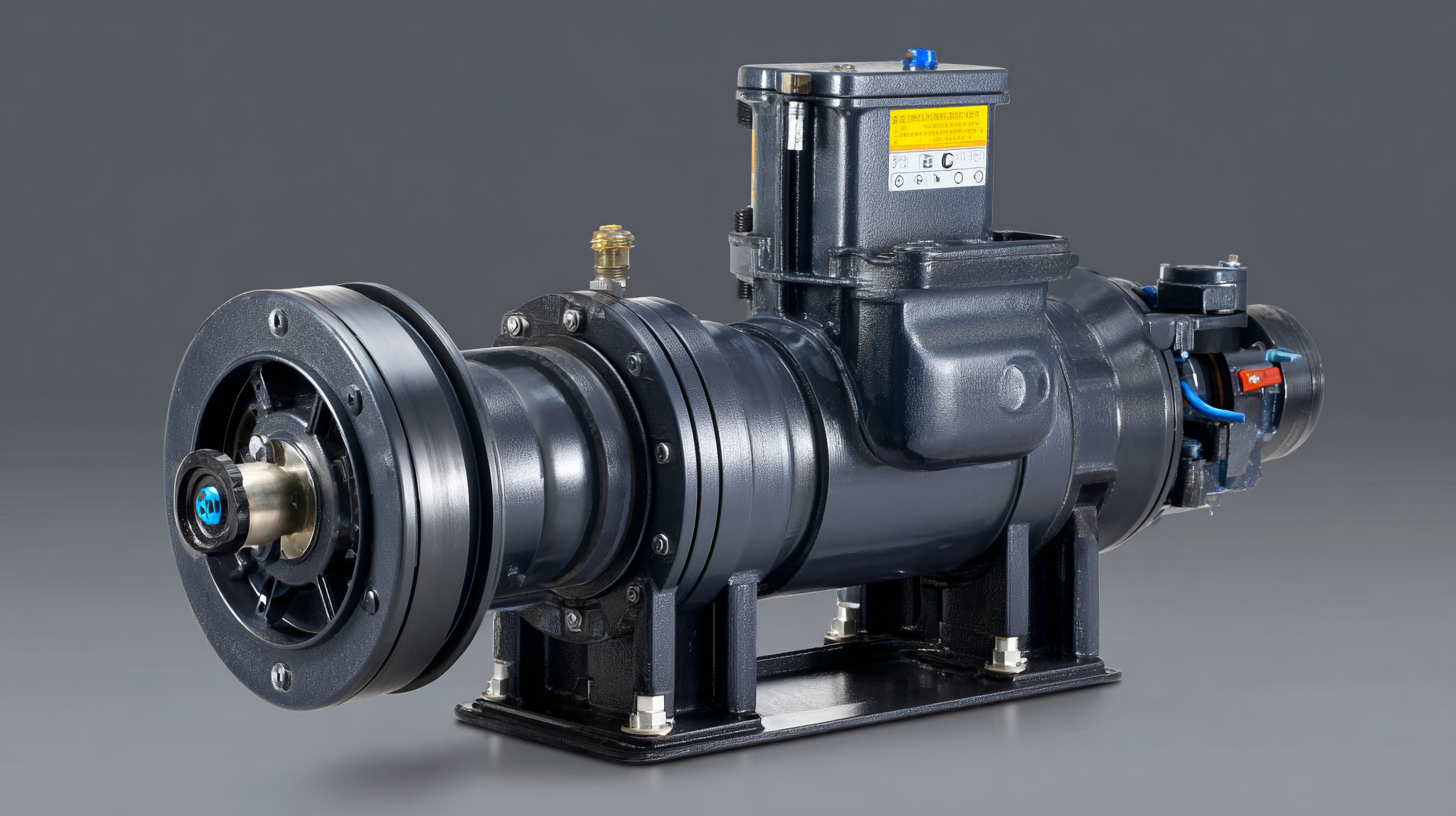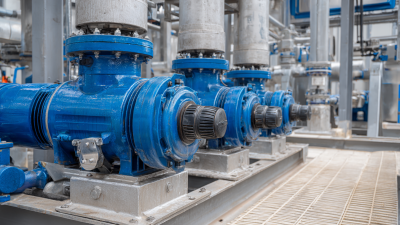
Universal Pumping | High Pressure Pumps
High Pressure Pumps for Difficult to Pump Slurry, Sludge, and Food Waste.
 Selecting the right diaphragm waste pump is crucial for ensuring optimal performance and efficiency in waste management applications. According to a recent report by Grand View Research, the global diaphragm pump market size was valued at USD 5.5 billion in 2020 and is projected to expand at a compound annual growth rate (CAGR) of 5.4% from 2021 to 2028. This growth underscores the importance of choosing the appropriate pump that can handle specific waste types and operational conditions.
Selecting the right diaphragm waste pump is crucial for ensuring optimal performance and efficiency in waste management applications. According to a recent report by Grand View Research, the global diaphragm pump market size was valued at USD 5.5 billion in 2020 and is projected to expand at a compound annual growth rate (CAGR) of 5.4% from 2021 to 2028. This growth underscores the importance of choosing the appropriate pump that can handle specific waste types and operational conditions.
Factors such as flow rate, pressure, and the characteristics of the waste being pumped must be carefully considered. In addition, industry experts recommend evaluating the pump materials, maintenance requirements, and energy efficiency to ensure longevity and reliability of the diaphragm waste pump in various industrial settings. By focusing on these critical aspects, users can make informed decisions that ultimately enhance their waste management processes.
When selecting a diaphragm waste pump, it's crucial to understand the various types available and their specific applications. Diaphragm pumps are often categorized by their design and operational characteristics, which can significantly impact their performance in different environments. For instance, air-operated diaphragm pumps are ideal for transferring corrosive or viscous liquids, making them perfect for chemical processing or wastewater management. Their ability to handle solids in suspension further enhances their versatility.
On the other hand, electric diaphragm pumps are tailored for more precise applications, such as laboratory settings or in-line processes where accurate flow rates are essential. These pumps offer consistent performance and are typically quieter than their air-operated counterparts. Additionally, some diaphragm pumps are designed specifically for sanitary applications, ensuring that they meet stringent hygiene standards in food and beverage processing. Understanding these distinctions enables users to select the pump that best aligns with their operational needs, ensuring efficiency and reliability in their waste management processes.
| Type of Diaphragm Waste Pump | Best Applications | Flow Rate (GPM) | Pressure Range (PSI) | Material Compatibility |
|---|---|---|---|---|
| Electromagnetic Diaphragm Pump | Chemical Transfer, Wastewater Treatment | 1-30 | 10-60 | Acidic and Alkaline Solutions |
| Air Operated Diaphragm Pump | Fuel Transfer, Sludge Handling | 2-50 | 5-90 | Biodiesel, Oils, Paints |
| Electric Diaphragm Pump | Water Removal, Pond Pumping | 3-40 | 0-50 | Water, Mild Chemicals |
| Smart Diaphragm Pump | Industrial Automation, Process Control | 1-25 | 10-80 | Chemicals, Water |
When selecting the right diaphragm waste pump, understanding the key factors for sizing is crucial for optimal performance. One of the primary considerations is the flow rate required for your specific application. Depending on whether you need to transfer fluids quickly or handle a steady flow, you’ll need to choose a pump that can meet those demands. Additionally, the viscosity and nature of the waste being pumped play a significant role. Pumps designed for thicker fluids require more power and may need different design features to ensure efficiency and reliability.

Another important factor is the total dynamic head (TDH), which refers to the height that the pump must lift the fluid. This assessment includes not only the vertical lift but also friction losses in the piping system. It’s essential to calculate the TDH accurately, as it affects the choice of the diaphragm pump's size and motor power. Furthermore, consider the pump material compatibility with the type of waste being handled. By focusing on these parameters—flow rate, TDH, and material compatibility—you can ensure that the diaphragm waste pump you select will perform effectively and meet your operational needs.
When selecting a diaphragm waste pump, understanding the material properties is crucial for ensuring chemical compatibility and long-term durability. Different applications often involve various fluids that may be corrosive or abrasive, requiring specific materials that can withstand these conditions. For instance, pumps made from materials like polypropylene or PVDF are excellent choices for handling aggressive chemicals due to their superior resistance to acids and alkalis. On the other hand, stainless steel options are suitable for environments where strength and resistance to corrosion are essential, especially when dealing with high temperatures or pressures.
Moreover, the durability of the diaphragm itself plays a significant role in the overall performance of the pump. Materials such as nitrile, EPDM, and fluorocarbon are commonly used for diaphragms, each offering different properties that can affect longevity and efficiency. Nitrile is often favored for its balance between chemical resistance and flexibility, while EPDM is preferred for its resilience to oxidation and sunlight exposure. By carefully analyzing the interplay between the pump's material characteristics and the specific chemicals it will encounter, users can select the most appropriate diaphragm waste pump, ensuring reliability and reducing the risk of premature failure.
When selecting the right diaphragm waste pump, understanding flow rates and head pressure requirements is crucial for efficient waste management. According to the American Society of Mechanical Engineers (ASME), many businesses overlook the significance of matching the pump's specifications to their operational needs, which can lead to inefficient waste handling and increased costs. For instance, a waste pump’s flow rate, typically measured in gallons per minute (GPM), should align with the average volume of waste produced. A study by the Water Environment Federation (WEF) indicates that a flow rate that exceeds the demand can waste energy while insufficient flow may cause backup issues.
Head pressure is another vital factor that directly affects the performance of diaphragm waste pumps. It refers to the height to which the pump can effectively lift the waste material against gravitational forces. Depending on the waste type and disposal site, head pressures may range from 10 to 50 feet. The Hydraulic Institute emphasizes that accurately calculating head pressure ensures the selected pump minimizes both downtime and operational inefficiencies. By evaluating both flow rates and head pressures, businesses can enhance their waste management strategies, thereby protecting the environment and optimizing resource usage.
This chart compares the flow rates and head pressure of various diaphragm waste pumps. Understanding these metrics helps in selecting the appropriate pump for efficient waste management.
When selecting a diaphragm waste pump, one critical decision is whether to choose an electric or air-operated model. Electric diaphragm pumps are often favored for their ease of use and efficiency. They can deliver consistent performance and are well-suited for applications requiring precise flow control. However, they may be sensitive to power supply issues and are best used in locations with stable electricity access.

On the other hand, air-operated diaphragm pumps are ideal for more rugged environments. They are generally more versatile and can operate in areas without electrical supply. These pumps can handle various fluid types and are particularly effective for thicker waste materials. However, they may require more maintenance and can be noisier than their electric counterparts.
Tips: When choosing between the two, consider your specific application requirements, available power sources, and the nature of the fluids being pumped. For mixed environments, where both power sources are present, having a backup option can enhance reliability. Additionally, factor in the maintenance needs of each type of pump to avoid unexpected downtime.






Universal Pumping
625 Apache Trail
Woodstock, GA 30189
Mon - Fri | 9:00 AM - 5:00 PM
Universal Pumping is staffed with industry professionals with 20-45 years experience with high pressure pumping systems. We represent only the “elite producers” in pump manufacturing: Britain’s EMS and Germany’s EMMERICH. Our engineering and manufacturing approach is conservative, and we do not use “guess work” in the design or sales of our pumping and filtration equipment.



